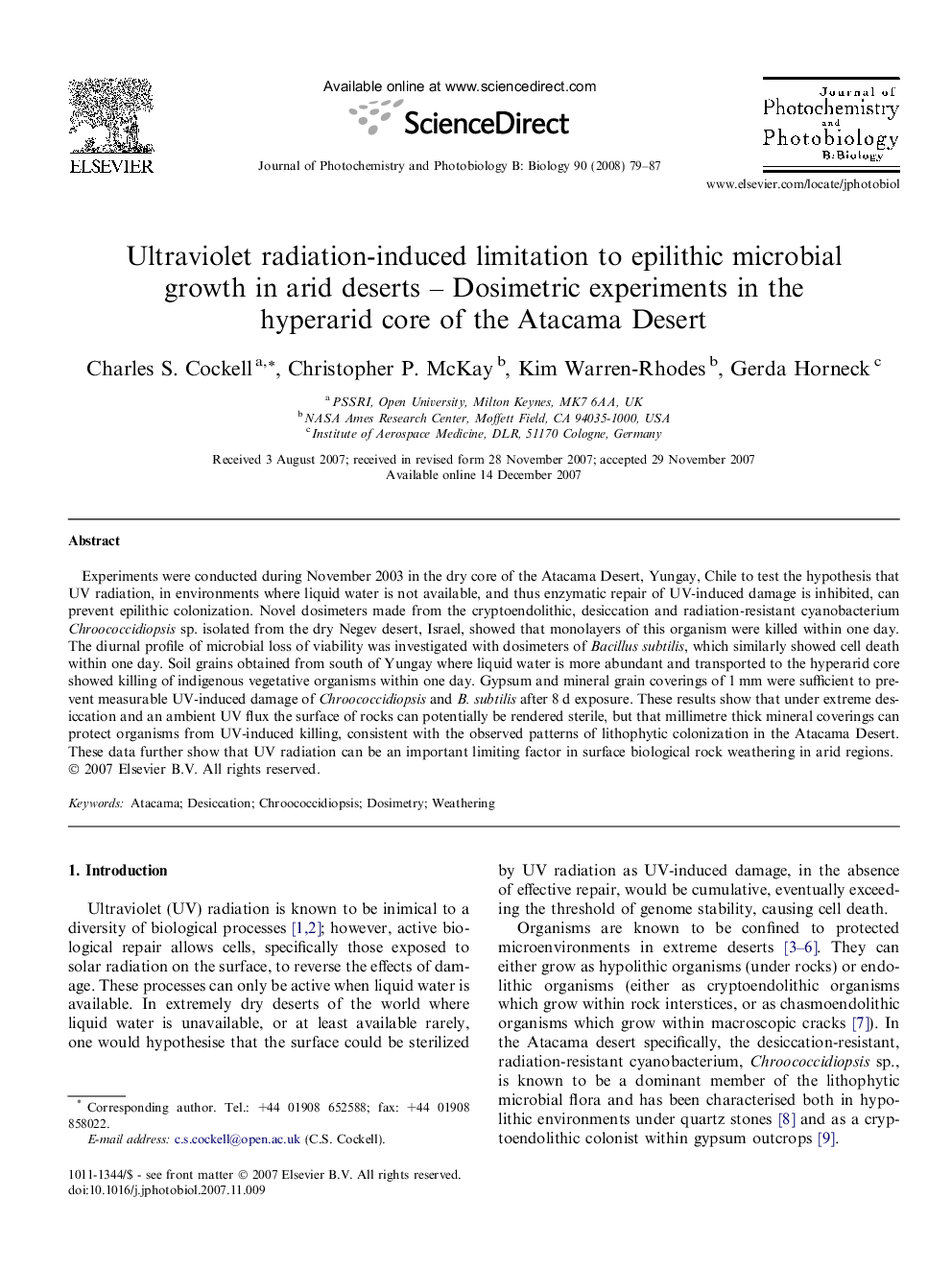| Article ID | Journal | Published Year | Pages | File Type |
|---|---|---|---|---|
| 30592 | Journal of Photochemistry and Photobiology B: Biology | 2008 | 9 Pages |
Experiments were conducted during November 2003 in the dry core of the Atacama Desert, Yungay, Chile to test the hypothesis that UV radiation, in environments where liquid water is not available, and thus enzymatic repair of UV-induced damage is inhibited, can prevent epilithic colonization. Novel dosimeters made from the cryptoendolithic, desiccation and radiation-resistant cyanobacterium Chroococcidiopsis sp. isolated from the dry Negev desert, Israel, showed that monolayers of this organism were killed within one day. The diurnal profile of microbial loss of viability was investigated with dosimeters of Bacillus subtilis, which similarly showed cell death within one day. Soil grains obtained from south of Yungay where liquid water is more abundant and transported to the hyperarid core showed killing of indigenous vegetative organisms within one day. Gypsum and mineral grain coverings of 1 mm were sufficient to prevent measurable UV-induced damage of Chroococcidiopsis and B. subtilis after 8 d exposure. These results show that under extreme desiccation and an ambient UV flux the surface of rocks can potentially be rendered sterile, but that millimetre thick mineral coverings can protect organisms from UV-induced killing, consistent with the observed patterns of lithophytic colonization in the Atacama Desert. These data further show that UV radiation can be an important limiting factor in surface biological rock weathering in arid regions.
